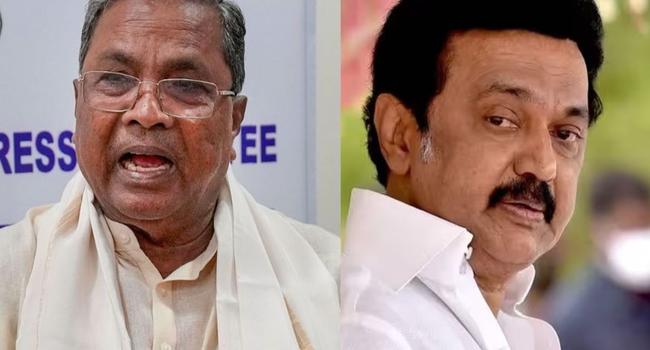Published 01:01 IST, October 11th 2023
Cauvery water crisis explained: How the water sharing dispute between Karnataka and Tamil Nadu began
The reason behind the dispute lies in the geographical origin of Cauvery river in Karnataka, as it enables the state to regulate water flow in Tamil Nadu.

Cauvery dispute between Karnataka and Tamil Nadu: What led to the crisis?
Amidst a political tussle between Karnataka and Tamil Nadu over the sharing of Cauvery water on September 28, the Cauvery Water Management Authority (CWMA) upheld the decision of the Cauvery Water Regulation Committee (CWRC) and asked the Siddaramaiah-led Karnataka government to release around 3,000 cusecs of water to Tamil Nadu every day, until October 15. Since then, Karnataka has retaliated by citing severe droughts in the state so as to avoid releasing water to Tamil Nadu.
Karnataka has been witnessing a series of protests and bandhs in several parts over the issue. Recent activities, including a Bengaluru Bandh and a statewide Karnataka Bandh, were conducted following the authorities' orders.
The order has led to a deeply rooted tussle that has evoked sharp responses from both states.
Actual reason behind the dispute
The prime reason behind the dispute lies in the geographical origin of the Cauvery river in Karnataka, as it enables the state to regulate the water flow into Tamil Nadu. The disagreement between the two states revolves around the allocation of water from the river, distribution of water on annual basis, sharing during the drought years, and the construction of dams and reservoirs.
Both the states have been demanding a larger share of the river's water to sustain their growing populations and agricultural needs, thus leading to ongoing disputes. The Karnataka government is having a challenge of handling the water crisis in the state. With the release of water to Tamil Nadu, it is almost certain that the standing crops in Karnataka that require 79 thousand million cubic feet (tmc) of water will not get it.
The required fulfillment of drinking water needs of Bengaluru city throughout the summer is also going to be another challenge. The requirement of the state for drinking water up to June 2024 is about 33 tmc.
What has Tamil Nadu sought?
The state of Tamil Nadu has sought the release of 12,500 cusecs of water. However, Karnataka Chief Minister Siddaramaiah and Deputy Chief Minister DK Shivakumar have stated that the rains received in August and September were the lowest in 125 years.
In 2018, the conflict appeared to approach resolution after the Supreme Court set water allocation limits for both Karnataka and Tamil Nadu, deviating from the 2007 rules stipulated by the Cauvery Water Disputes Tribunal (CWDT).
Karnataka was asked to allow 177.25 thousand million cubic feet of Cauvery water to flow into Tamil Nadu annually, leading to alteration of previously agreed-upon allocation. Despite this attempt to provide clarity, the decision was not accepted completely by either, leading to protests and agitation in both states.
Notably, the Centre constituted the Cauvery Water Disputes Tribunal (CWDT) on June 2, 1990, to keep a check on the water dispute between the states of Tamil Nadu, Karnataka, Kerala, and Puducherry with respect to the inter-state Cauvery water and river basin.
Updated 01:01 IST, October 11th 2023




